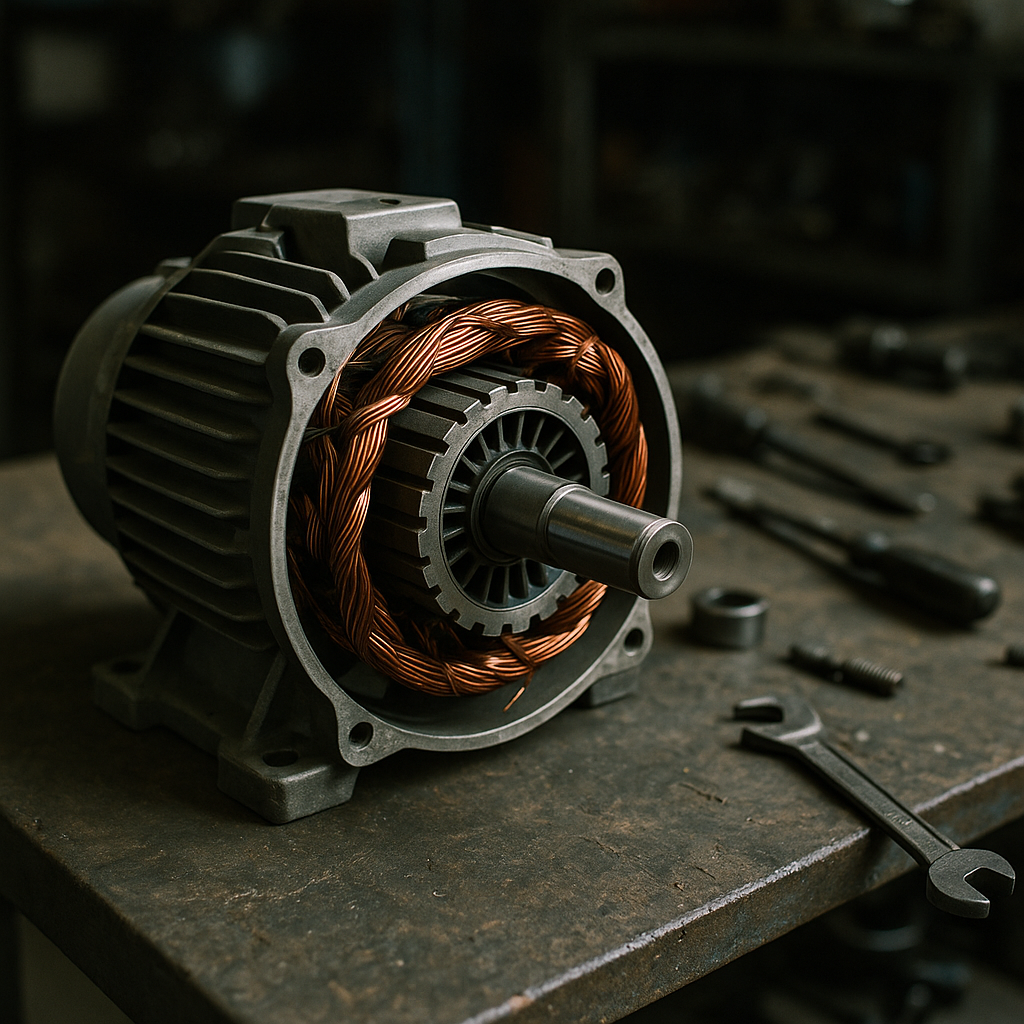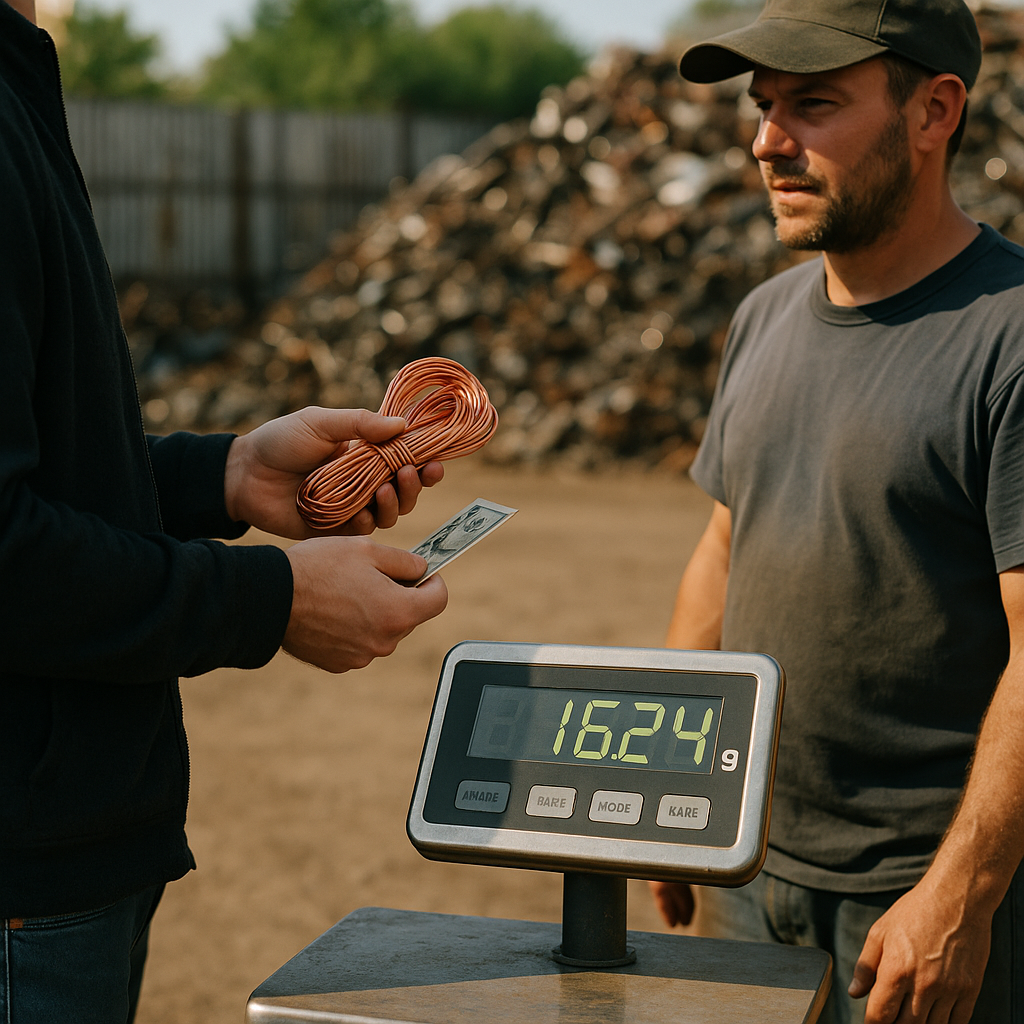5901 Botham Jean Blvd, Dallas, TX 75215
Learn the Factors that Influence Current Scrap Metal Copper Prices
September 21, 2025The scrap copper market is experiencing strong values in 2025, with bare bright copper commanding premium prices. Currently, high-grade bare bright copper wire sells for $3.50-$3.70 per pound across most recycling centers. This reflects the ongoing demand for quality copper in manufacturing and infrastructure projects.
Clean #1 copper tubing is fetching around $3.40 per pound. The slightly lower grade #2 copper tubing, which may contain paint, solder, or some impurities, sells for approximately $3.20 per pound. These prices have remained relatively stable over recent months despite typical market fluctuations.
Prices for insulated copper wire vary significantly based on insulation type and copper content. Current market rates range from $1.15 per pound for basic insulated wire to $2.85 per pound for premium 500-750 MCM cable with bare bright copper inside. THHN wire and Romex command middle-range prices between $1.75-$2.65 per pound. For scrappers, properly sorting and preparing copper materials is key to maximizing value.
How Do Different Grades of Copper Scrap Compare in Value?

The recycling value of copper scrap varies significantly based on its grade. Bare bright copper wire is at the top of the value chain, fetching around $3.70 per pound in current markets. This premium price reflects its exceptional purity—typically 99% or higher—and minimal processing requirements.
#1 copper, which includes clean copper tubing and bus bars with slight oxidation but no contaminants, follows closely at about $3.40 per pound. With a purity level of 95-99%, this grade remains highly desirable for recycling facilities because it requires relatively little processing before reuse.
#2 copper ranks third, valued at approximately $3.20 per pound. This classification includes copper with light coatings, minor corrosion, or attached solder. Despite containing 94-96% copper, the additional processing needed to remove these impurities accounts for its lower market value.
Insulated copper wire shows the widest price variation based on its specific characteristics. Standard insulated wire might fetch only $1.15 per pound, while high-grade 500-750 MCM wire—which contains significantly more copper by weight—can command up to $2.85 per pound. The substantial price difference results from the copper-to-insulation ratio and the complexity of separating these components.
These price disparities directly reflect three key factors that recyclers consider when evaluating copper scrap. First, higher purity levels mean less refining is needed to return the material to market. Second, processing requirements significantly impact profitability—materials needing extensive cleaning, sorting, or separation naturally fetch lower prices. Third, market accessibility matters—grades with universal applications and steady demand tend to maintain more stable pricing.
For recyclers and scrap metal sellers alike, understanding these grade distinctions can substantially impact revenue. Proper identification and separation of copper scrap before selling ensures maximum value for your materials while supporting more efficient recycling processes throughout the industry.
What Factors Influence Scrap Copper Prices?
Scrap copper prices fluctuate due to a complex interplay of global market forces. Understanding these factors is essential for recyclers seeking to maximize returns in this dynamic industry. While supply and demand fundamentals remain the primary drivers, several other elements also significantly impact pricing.
The global economy exerts considerable influence on copper values. When the construction, manufacturing, and technology sectors thrive, demand for copper rises sharply. Conversely, economic downturns often lead to decreased industrial activity and lower prices, making copper particularly sensitive to economic indicators.
Key factors influencing scrap copper prices include:
- Global Supply Constraints – Limited mine expansions, environmental regulations, and production bottlenecks drive greater reliance on secondary supply sources. Recycled copper production is growing at a 4.2% annual rate, outpacing primary production’s 2.1% growth.
- Industrial Demand Patterns – Copper’s extensive use in construction, automotive manufacturing, and electronics creates variable demand cycles. Infrastructure projects, in particular, drive substantial copper consumption.
- Renewable Energy Expansion – The push toward green technologies is creating unprecedented demand for copper in electric vehicles, wind turbines, and solar installations.
- Geopolitical Developments – Trade tensions, tariffs, and regional conflicts can disrupt supply chains and trading patterns.
- Currency Exchange Rates – As copper trades globally, fluctuations in currency values directly impact pricing structures.
An example illustrates these factors in action. In early 2025, Chinese buyers significantly reduced imports of US copper scrap due to uncertainty surrounding potential tariffs between the two nations. This shift in purchasing behavior immediately affected global trading patterns and prices, with export-heavy copper grades experiencing wider price discounts despite stable domestic demand.
Energy costs also play a crucial role, as recycling operations require substantial power. When electricity and fuel prices rise, processing expenses increase, potentially narrowing profit margins for recyclers. Similarly, transportation costs affect the final value recyclers receive, especially for operations distant from major processing centers.
For recyclers to thrive, staying informed about market trends is essential. Those who understand these price drivers can time their sales more strategically and better prepare for market fluctuations.
| Grade | Characteristics | Purity (%) | Price (USD per pound) |
| Bare Bright Copper | Uncoated, unalloyed, bright appearance | 99%+ | $3.50 – $3.70 |
| #1 Copper | Clean tubing and bus bars, slight oxidation | 95 – 99% | $3.40 |
| #2 Copper | Light coatings, corrosion, solder | 94 – 96% | $3.20 |
| Insulated Copper Wire | Varies with copper content and insulation | – | $1.15 – $2.85 |
Sustainability initiatives and environmental regulations increasingly shape the market as well. Many governments now promote recycling through favorable policies, further strengthening the secondary copper market’s role in global supply chains. This push toward circular economy solutions creates additional value for properly sorted and processed scrap copper.
How Can You Get the Best Prices for Your Scrap Copper?

Maximizing the value of your scrap copper involves understanding the material and the market factors that influence pricing. Through proper sorting, preparation, and strategic selling, you can significantly increase your returns. Here are proven strategies to help you get the most money for your copper scrap.
Understand Copper Grades
The first step to maximizing value is knowing what you have. Different grades of copper command significantly different prices in the recycling market.
Bare bright copper wire is the most valuable grade. This uncoated, unalloyed wire must be clean, free from insulation, and have a bright appearance. Recent data indicates this premium grade fetches between $3.89 and $4.01 per pound.
#1 copper is the second most valuable grade. This includes clean copper tubing, bus bars, and heavy-gauge wire free from solder, paint, and other coatings, typically commanding prices between $3.69 and $3.91 per pound.
#2 copper includes material with light coatings, soldered connections, or minor corrosion. While less valuable than higher grades, it still offers significant returns, ranging from $3.59 to $3.81 per pound.
Sort and Prepare Your Copper
Proper preparation can upgrade your scrap to a higher-paying category. Start with a simple magnet test to separate copper from ferrous metals. Copper is non-magnetic, so anything sticking to a magnet should be sorted separately.
For insulated wire, removing the insulation can increase its value by up to 50%. Use wire strippers rather than burning the insulation, which damages the copper quality and is illegal in most areas.
Clean visible contaminants from your copper. Remove non-metallic attachments like plastic fittings or rubber insulation. For copper with paint or tarnish, consider using wire brushes or sandpaper to clean the surface, potentially upgrading it from #2 to #1 grade.
Cut larger copper pieces into manageable sizes for easier transport and more accurate grading at recycling facilities. Bundle similar grades together using strong wire or straps and store in a dry area to prevent oxidation that could lower the grade and value.
Compare Offers From Multiple Buyers
Prices can vary significantly between different scrap yards, even within the same area. Call several facilities to compare current rates before selling. Ask specifically about their pricing for each grade of copper you have.
Consider the total value when choosing where to sell. A slightly lower price at a nearby yard might be more profitable than driving further for a marginally better rate when accounting for transportation costs.
Keep detailed records of each buyer’s prices over time. This data helps identify which yards consistently offer better rates for specific copper grades, informing your future selling decisions.
Time Your Sales Strategically
Copper prices fluctuate based on global economic conditions, supply and demand dynamics, and currency exchange rates. Staying informed about these market trends can help you sell when prices are trending upward.
Many recycling facilities post their current rates online, allowing you to monitor price changes without making phone calls. Consider setting a target price for your material and waiting to sell until that threshold is reached.
If you have storage space, consider holding your scrap during market downturns. In 2023, despite predictions of prices falling below $3/lb, copper maintained values above $4/lb throughout much of the year, rewarding those who waited for better market conditions.
Build Relationships With Buyers
Establishing good relationships with local scrap yards can lead to preferential treatment. Regular sellers often receive better prices than one-time customers.
Be professional and courteous in your dealings. Scrap yards are busy places, and being efficient and respectful during transactions makes you a preferred customer.
Provide consistently well-sorted and clean materials. Yards appreciate suppliers who reduce their sorting work and may offer better prices as a result.
Keep Accurate Records
Maintain detailed records of your sorted copper inventory. Note the weight, grade, and condition of each batch before transport to ensure fair payment.
Document each transaction, including the date, weight, grade, price received, and buyer. This information helps track price trends and identify the most profitable buyers for future sales.
Use these records to analyze your recycling efforts over time, identifying opportunities to improve sorting or timing strategies for better returns.
By implementing these systematic sorting and preparation strategies, you’ll not only receive better compensation for your copper scrap but also contribute to a more efficient recycling ecosystem. The extra effort invested in proper sorting, cleaning, and strategic selling can significantly boost your profits while supporting sustainable resource conservation.
Conclusion: Understanding the Scrap Copper Market
The scrap copper market is a dynamic sector within the recycling industry, shaped by factors such as global economic conditions and geopolitical developments. Success in this market requires both knowledge and strategic action. By understanding price drivers, implementing effective sorting techniques, and leveraging technological solutions, participants can significantly enhance their returns.
Market intelligence is an invaluable tool. Staying informed about copper price trends, trade policies, and industry developments allows you to time your transactions effectively. Proper preparation of materials—sorting by grade, removing contaminants, and ensuring appropriate sizing—directly impacts the value you receive. This preparation not only maximizes your financial returns but also contributes to more efficient recycling processes that benefit the environment through reduced energy use and conservation of natural resources.
For your recycling needs, contact Okon Recycling at 214-717-4083. Our team can help you understand the scrap copper market with expertise and provide solutions tailored to your specific requirements.
